Tuesday, December 26, 2006
This web log has moved to Blogspot in order to take advantage of the new labeling feature (categorization by topic). This feature does not work with current FTP-based setup. The new address is: http://zymoglyphic.blogspot.com/
Sunday, November 26, 2006
Rosamond Purcell's Art from Decay
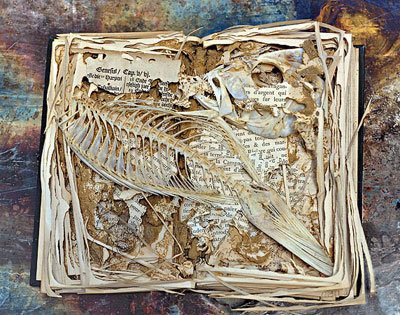
Rosamond Purcell has a long history of providing inspiration to the Zymoglyphic Museum as a photographer of museum specimens, a scholar of curiosities, an exhibit curator, a writer, and an assemblage artist of decay. Her photographs of natural history museum specimens earned her a place in the museum's Photographers of the Marvelous online photography exhibit, and her use of natural light in these pictures has been an inspiration to our own curatorial department's attempts to document our museum's collections. One of her collaborations with Stephen Jay Gould, Finders, Keepers: Eight Collectors
In 2003, Purcell curated a traveling exhibit called Two Rooms. One room was a reconstruction of a small but historically important natural history museum created in the 17th century by Ole Worm. The other room featured a reconstruction of Purcell's own studio/museum, with walls of rusted metal sheets, a library of decayed, worm-eaten books, and arrangements of a variety of objects transformed by nature and weathering. Most of these objects came from a single source, a vast junkyard in Maine which she has been mining for aesthetic gold for two decades, and whose story is told in the book Owls Head
Her new book Bookworm: The Art of Rosamond Purcell
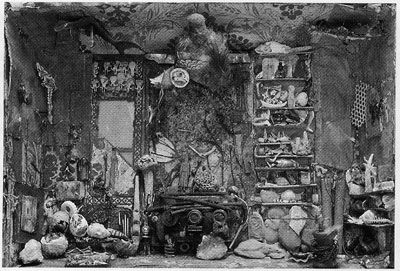
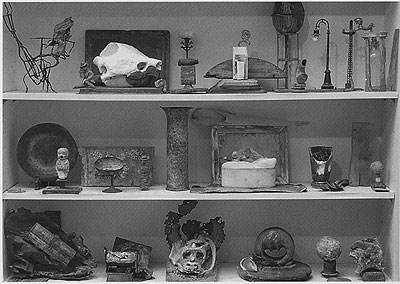
There seem to be still more Zymoglyphic inspirations which have yet be fully documented. Above are two photographs from "Two Rooms", the exhibition catalog. The top one is a "miniature museum" from 1994, similar in spirit to the Zymoglyphic shoebox art galleries and the bottom shows a number of objects on display in her studio, any of which would be at home in our museum.
Labels: Artists, Natural art, Photography
Sunday, November 12, 2006
Only 312 days until Wacky Web Site Day!
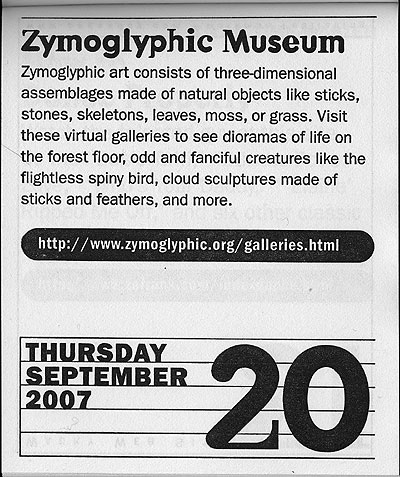
Mark your calendars! Or if you buy the Wacky Web Sites Page-A-Day Calendar 2007
The upshot was a multi-day spike in web traffic and an additional blog subscriber or two, bringing that count close to double digits. By the way, if you wish to subscribe to the blog via e-mail (not a bad idea considering how erratically it is updated) and don't know what RSS means, just send in your e-mail address and you can receive it that way. E-mail subscriptions come with the usual lifetime no-spam guarantee.
Now, our curatorial department might well prefer a grad student or two to write a scholarly treatise on the museum instead of the "wacky web site", or "zymo-what?", approach, but we will take what we can get. The museum has yet to find its Lawrence Weschler, who chronicled the Museum of Jurassic Technology. The Museum of Dust has come pretty close when not distracted by territorial spats and interplanetary intrigue. We and the MoD were featured recently on BlueTea's virtual museum tour, and this Live Journal entry was particularly endearing. We offered her a job, but she ultimately declined. Other blogosphere musings on the museum can be found here, here, and here.
Labels: Museum news and history
Saturday, October 28, 2006
Fascinatin' Crustaceans
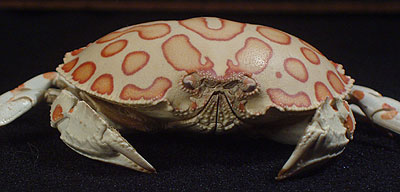
The Zymoglyphic Museum's Arthropod Division has recently expanded its Crabs of the World collection with a shipment from Conchology, Inc. of the Philippine Islands. The museum's original collection has been a miscellany of eBay, shell shop, and other purchases, not always with proper identification. A recent concerted effort for taxonomic accuracy in identifying its various specimens has been aided by a number of helpful folks at The Crustacean Society.
Crabs have an important place in Zymoglyphic culture. When dead, they often look as though they are just posing for a really long time, and so make excellent diorama characters. They are the stars in the traveling crustacean mini-diorama, as well as supporting actors in many of the museum's aquatic dioramas. They are nautical mechanical marvels, from the tight, interlocking parts of a box crab to the implausibly leggy spider crabs. Some, such as the fiddler crab, verge on becoming "eccentric contraptions", surreal beings whose very existence seems impossible. Some have great character, such as the leopard crab shown above.
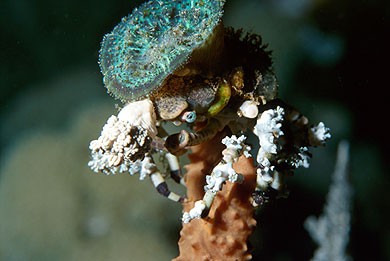
In previous entries, we have featured as "natural assemblage artists" the bowerbirds, who collect and arrange various objects to attract mates, and the Xenophora, shellfish which collect and arrange other shells on themselves. Decorator crabs take the latter idea further and make themselves into living, walking gardens. They cover themselves with a selection of living seaweed and plant-like animals, such as sponges, corals, and bryozoans. This is not a weed garden in the sense of just allowing things to grow on the carapace; the selections are carefully nipped and placed on specialized projections on the shell. The purpose is both camouflage and protection due to the poisonous nature of many of the selections. The festively decked-out crab shown here is a Cyclocoeloma tuberculata (photo from edge-of-reef.com).
If you are in the Seattle area and interested in crustaceans, there is an excellent collection at the shell museum in Port Gamble, a ferry ride across Puget Sound from Seattle.
Labels: Museum objects and collections, Natural art, Natural history
Sunday, October 22, 2006
Further Adventures of the Zymoglyphic Mermaids
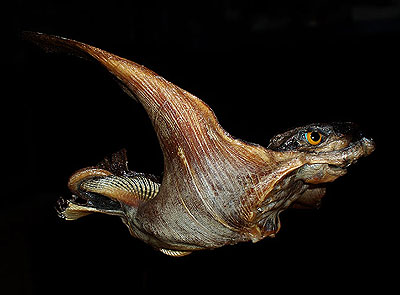
Jenny Haniver and her cousin, the Zymoglyphic Mermaid, featured here recently, have been conscripted by the Museum of Dust to help out in Terra Incognita's impending war with the Republic of Tinselman. This so-called "republic" is actually run by a khan, or perhaps some other of the ever-changing panoply of tyrants and despots that seem to take turns ruling the place, with media magnate Rupert Murdoch apparently in on it too. Mermaids have historically played roles of destructive seduction, and our "paragons of pulchritude" (in our director's well-turned phrase), have been assigned to lead Mr. Murdoch astray. We have received news that Murdoch is now "fully occupied on the tiny islands off RoTs borders explaining cross-media ownership laws to the Zymoglyphic Mermaid and Jenny Hanniver". Tinselman appears at the moment to be coming unglued due to the extreme convolutions of its own plotlines, and may simply collapse of its own weight.
The Leatherwing, show above, is from the Zymoglyphic Museum's natural history collection. A more primitive relation of the Zymoglyphic Mermaid, it is a night-flying creature that may be useful for espionage and reconnaissance purposes. We will await word from Director de Plume on its mission.
On a taxonomic note, we must distinguish between the mermaids native to the Zymoglyphic region (order Rajiformes) and their distant cousins, the "Feejee mermaids". The latter are distinguished by a simian appearance in the upper body and a generally agonized facial expression (as opposed to the winning smiles on our own beauties). The "Feejee mermaids" originated in the waters of the western Pacific; that portion of their history is ably chronicled by Pink Tentacle. P.T. Barnum acquired one of these and made it famous. Due to the lack of genitalia (because of the lack of a crotch in which to contain them), there is some gender ambiguity, and they are also known as mermen. Modern specimens can be found here and here.
Labels: Museum news and history
Sunday, October 15, 2006
From the Ancient Land of Happy Objects
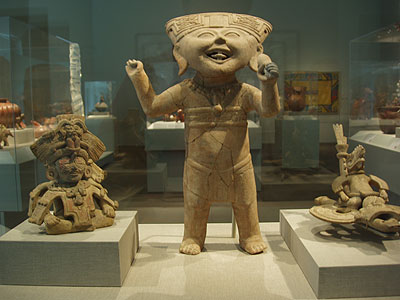
A return trip to the de Young Museum in San Francisco turned up this fellow, a local emissary from Remojadas, the ancient Land of Happy Objects. Cheeky Pete was delighted to learn of this long-sought ur-object, the King of Happy Objects, but despite intense imaginary negotiations with the de Young curatorial staff, it was not possible for him to obtain the King for the museum's Happy Objects Collection. The King thus remains trapped in his plexiglass case. He is originally from the Veracruz area of Mexico, and is some 1300 years old. The Metropolitan Museum in New York has a cousin of his, and nervily suggests that his happiness is primarily due to intoxication.
The Remojadas culture had its "Classic" period between 500 and 800 AD, and produced a large number of "smiling figures". Further research by the curatorial staff has revealed the existence of a classic 1960 tome about the figurines produced in Remojadas: William Spratling's More human than divine: An intimate and lively self-portrait in clay of a smiling people from ancient Vera Cruz
The little people of Remojadas flourished, loving their own creations, presumably in utter peace and contentment, for more than eight hundred years.
The main attraction of the book is the set of plates by Manuel Alvarez Bravo, a leading Mexican photographer often linked with the Surrealists. The photographs reveal that the figurines had a whole range of expression, not just smiling. The plates are classics of artifact photography.
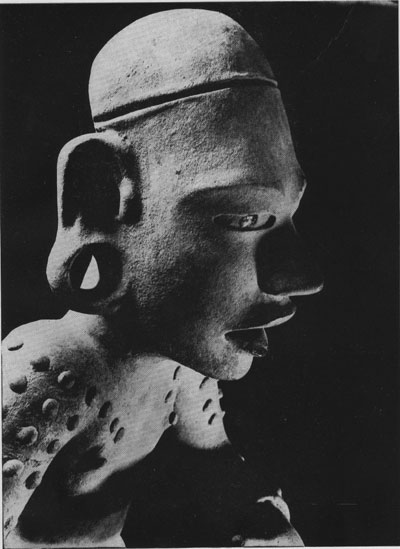
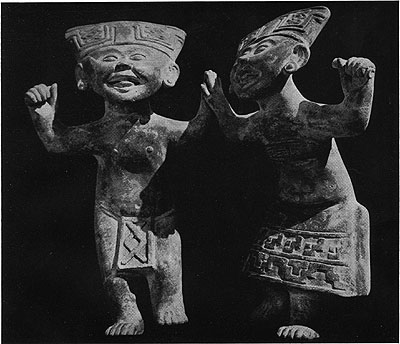
Labels: Photography
Sunday, October 01, 2006
Notes from the Museum's Mermaid Tank
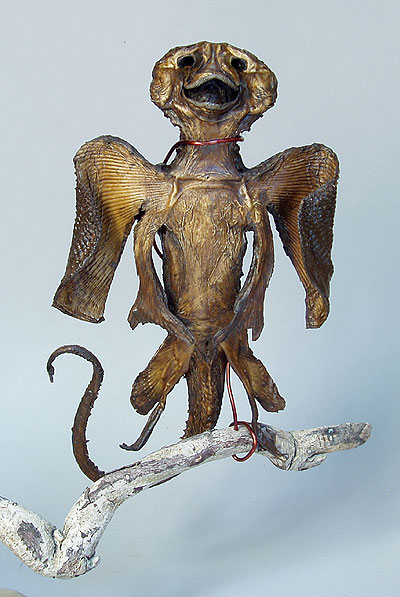
Mermaid collecting has had a rather difficult and controversial history. Mermaid collectors are often beguiled by artists' depictions of full-size, curvaceous, fish-women, but the actual specimens that show up in collections tend to be much shorter and not really all that human-looking. Some species seem to be a primate-fish mixture, with the type specimen generally regarded to be P.T. Barnum's Feejee Mermaid, exhibited at his American Museum. Modern versions can be seen here.
The Zymoglyphic Museum's new curiosity cabinet acquisition, shown above, belongs to a family of mermaids that has been referred to throughout history by the common name "Jenny Haniver".
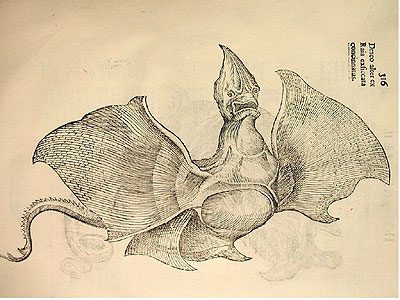
This related species appears in Ulisse Aldrovandi's posthumously published 1642 work,
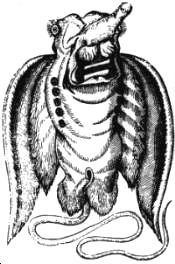
This sighting of a somewhat more primitive species is from Ambroise Pare's 1573 work, On Monsters and Marvels
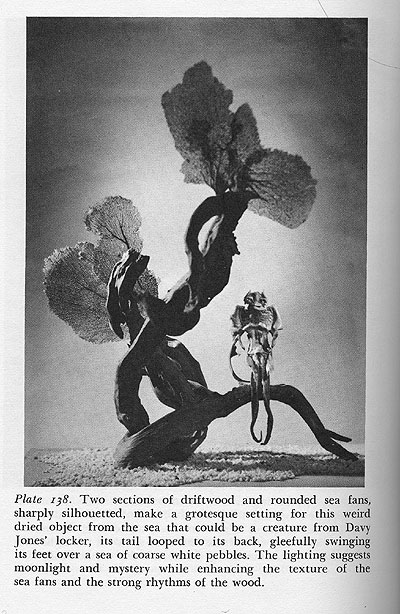
This one appears in Mary Thompson's 1960 natural art classic, The Driftwood Book
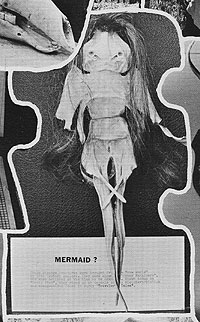
This specimen is from the 1975 catalog of the Wonders of the World Museum.
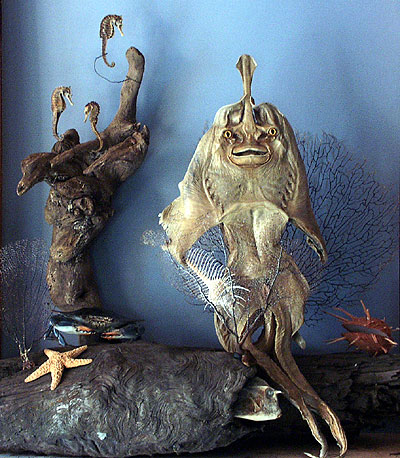
The Zymoglyphic museum's new acquisition joins two existing specimens in its natural history department. This one, referred to as the Zymoglyphic Mermaid, is endemic to the Zymoglyphic region. Also native to the region is a primitive flying species known as the Leatherwing.
Labels: Museum objects and collections
Saturday, September 09, 2006
Cheeky Pete's Collection of Happy Objects

The Zymoglyphic Museum Shop's Marketing Department regrets to announce that Cheeky Pete the Clown has resigned his position as drinkware manager (or "commercial shill" as he calls it) a scant few weeks into the job. The curatorial staff, on the other hand, is delighted to announce that Mr. Clown has shown great initiative and curated his own exhibit of "happy objects" from the museum's curiosity cabinet. He is, needless to say, quite pleased with the results!
Mr. Clown would like to remind the museum's patrons that the museum is not all about dead animals and decay. He points to historical precedents in the Zymoglyphic region, such as the native happy fish species and the legend of the happy monk.
Top shelf: A pair of Latin American whistles waiting for a happy tune. One is a serenading bovine devil and the other is a mysterious creature with a Mona Lisa smile.
Next shelf: A chorus of shell-shop frogs (souvenir of Florida) and a goofy plastic dinosaur
Then: A pair of happy shell frogs relaxing on a tropical island
And next: A set of (maniacally happy) "Crazy Newts" which have escaped from the hallucinogenic mind of Jim Woodring and taken on a solid form
Bottom shelf: Agate creatures. It is often hard to tell if stone figures are happy, but Mr. Clown, being an inanimate object himself, assures us that these are. Also, a grinning death's-head pipe (Mr. Clown says: "It's for smoking killer weed! Ha Ha!").
Those interested in greater detail may wish to click on the above image.
-- Museum Staff
Labels: Museum objects and collections
Tuesday, August 29, 2006
The Quiet Parlor of the Fishes

Late in the 1980's, before the Zymoglyphic Museum existed, I had an idea to make an aquarium, not with water, but a scene with a sandy bottom. This would be a big version of the surreal scenes in sandtrays that I had been making at that time. I was recently married then, and the theme was of two fish making a home in a strange world. I liked the idea that the result would be a piece of furniture you would have in your house, rather than a piece of art intended for a pedestal in a gallery. It was even rather practical, in that it would be very low maintenance for an aquarium. The aquarium was made of various things that I had found and had been given. My wife was making intricate hinged fish out of metal and plexiglass, and I thought an aquarium would make a nice home for some of them.
Even the title, "The Quiet Parlor of the Fishes", is a found object, taken from Thoreau's "Walden":
I cut my way through a foot of snow, and then a foot of ice, and open a window under my feet, where, kneeling to drink, I look down into the quiet parlor of the fishes, pervaded by a softened light as through a window of ground glass, with its bright sanded floor the same as in summer; there a perennial waveless serenity reigns as in the amber twilight sky, corresponding to the cool and even temperament of the inhabitants. Heaven is under our feet as well as over our heads.
"Walden" was one of my favorite books in high school. It provided a mythic and spiritual dimension to nature that transcended the mere collecting, naming, and classifying of specimens, which had been the focus of my original museum. The summer between high school and college, I even tried a brief emulation of Thoreau's year-long stay at Walden pond. I camped out by myself for four days on an island in the middle of a small mountain lake in Olympic National Park. I paddled out to the island on a primitive boat made by tying driftwood logs together, read Walden, and wrote a short journal, trying to emulate Thoreau's 19th century style.
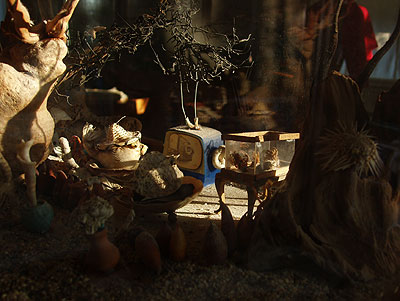
In this dry aquarium, the two fish have a little television set in their parlor and are watching a program that features one of the Judy's art-fish. They also have their own little dry aquarium, foreshadowing the worlds-within-worlds theme of the museum-to-come. This first aquarium was followed by a series of small dioramas inside standard 10-gallon aquariums. Some had a terrestrial theme and some were aquatic. The serenity of the underwater world, eternal and unchanging, gave way to the archetype of the primordial ooze, a crowded, dense, active, messy world of creation, decay, and conflict, and a Walden-like mythological cycle of death and rebirth.
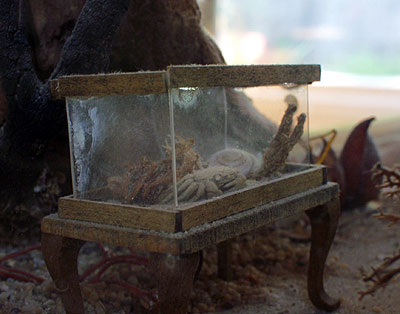
In recent years, I have been trying to capture a sense of the little worlds inside the dioramas in close-up photography and I think this is one of the more successful attempts. It is the little aquarium in fishes' parlor. This picture was, in fact, my entree into hallowed halls of the Museum of Dust.
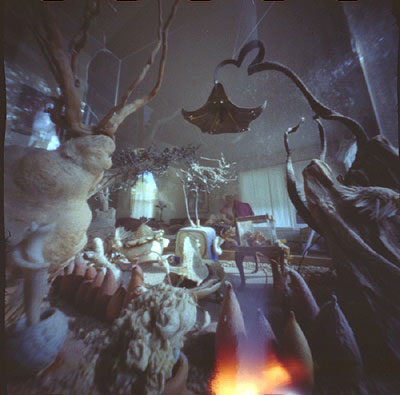
In the past couple of months, Judy has been experimenting with pinhole photography, using homemade mini-cameras. I was not convinced of the true potential of this technique until she took some photos of the aquarium, which gave the whole thing a dreamlike air. The full set of photos can be seen here. One of the those photos, of an astronaut from the moon who is coming to visit the fish, resulted in her own initiation into the Museum of Dust.
Labels: Dioramas, Museum objects and collections, Photography
Monday, August 28, 2006
U.S. Postage Stamp Honors Shop Customers!
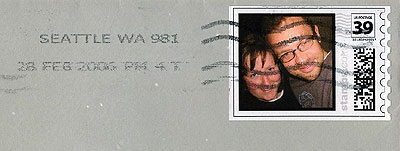
The U.S. Postal Service has issued this stamp featuring the first and so far only people known to have purchased Zymoglyphic-branded apparel from the museum shop. This daring couple plunged into unknown retail waters some 2 1/2 years ago and are now rewarded with owning a pearl of great rarity, as well as being thrust into the avant garde of the fashion world. The resale value of rare Zymoglyphic merchandise is literally incalculable as none has as yet been offered for sale. The couple's name is being withheld in order to forestall any rumors that the shop has yet to make an apparel sale outside the curator's immediate family.
-- Museum Shop Marketing Dept.
Labels: Museum shop
